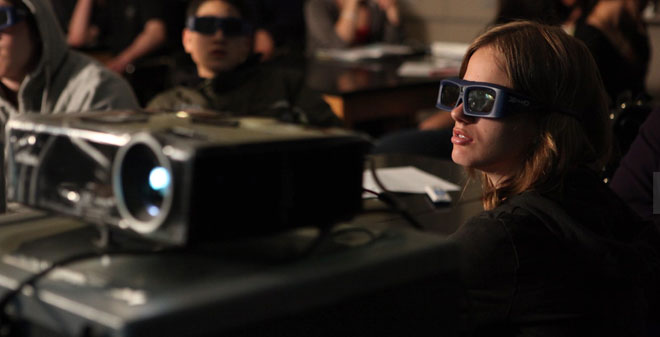3D Brings Science to Life
By Edwin P. Christmann
Posted on 2016-07-15
Middle school children are inquisitive and enjoy classroom opportunities to learn visually. Subsequently, an option worth consideration is an application of technology known as 3D. It’s similar to the 3D technology that is used in movie theaters and is designed to enhance visualization of pairs of images and gives users a greater sense of depth perception.
For nearly 150 years, stereoscopes have been used for looking at images that depict left-eye and right-eye views of the same object; culminating into a single three-dimensional image. Subsequently, when viewing the image with special projection hardware and eyewear, a typical stereoscope provides each eye with a lens that makes the image seen through it appear larger and more distant, resulting in the illusion of depth.
Recent Advances in technology have led to much more sophisticated ways of projecting the third dimension. For example, Data Light Processing (DLP) technology creates a stunning picture and is used in contemporary projectors. DLP technology is extremely fast, and projects two images on the screen at the same time, i.e., one for each eye. As a tool for conceiving the image, 3D glasses are used to combine the two images into 3D and can be purchased from a variety of projector manufacturers, e.g., InFocus, Texas Instruments, etc.
In this age of technology, even with the most determined efforts to differentiate classroom instruction, it is common for teachers to face kids who are difficult to keep on task. However, with 3D technology and at a cost that most schools can afford, a sudden vision of a brain or a heart via 3D technology can motivate students with an authentic experience of the relationships between individual cell parts and the structures and function of the heart [http://www.theguardian.com/classroom-innovation/3d-lessons-in-schools].
By presenting students with problem-solving skills, using 3D technology can give students the opportunity to go beyond the “Knowledge-level,”and reach the “Analysis-level!” For example, students can take a virtual trip down through the crust of the earth and travel its inner core. Along the way, students can examine changes in density, mass, and temperature. With 3D technology, students can go beyond memorization and travel on an exciting journey through nature, which can reveal folded mountains and massive sea trenches; almost as if it’s really happening before your eyes [https://sciencenode.org/feature/3d-tectonic-modeling-answers-age-old-geology-question.php]. So what do teachers need to get started?
Different Projectors and Software Packages
There are a variety of 3D software packages available for science teaching. Recently, projector manufacturers have begun rolling out 3D models targeting the needs of classrooms, while makers of 3D content and accessories are responding to schools by creating products to meet the needs of a growing market. For example, the 3D capability of the 2300-lumen projector from ViewSonic (www.viewsonic.com) is available for around $500. Here is a list of manufactures who carry 3D projectors:
www.mitsubishi-presentations.com
Once a projector has been purchased, teachers can get software to integrate 3D software, e.g., [http://en.softonic.com/s/free-3d-science-animation-software]. An excellent website worth visiting is Cyber Science 3D, which offers content that spans science content areas. Teachers can use the content in a lecture environment to demonstrate terms, labels, and spatial relationships between objects in the 3D simulations [http://cyberscience3d.com/3d-content-library/]. If interested in giving 3D a try, Cyberscience3D offers a trial where you can dissect a cactus. Access this site and experience the benefits of 3D for classroom instruction, i.e., [http://cyberscience3d.com/free-trial/]. In addition, a variety of 3D models are available for classroom use in the following areas:
Once 3D software is selected, special 3D glasses are needed, which can range in price from around $7.99 to over $200. Depending on your budget and what you want to use, consider durability when purchasing glasses [ http://3d-tv-glasses-review.toptenreviews.com].
The integration of 3D technology into science instruction gives students an opportunity to visualize ideas and have these ideas serve as virtual models for real-life scenarios. In essence, 3D technology gives teachers an opportunity to bring the future to our students today!
Authors
Mervyn J. Wighting (mervwig@regent.edu) is a professor of education at Regent University in Virginia Beach, Virginia. Edwin P. Christmann (edwin.christmann@sru.edu) is a professor, chairman of the secondary education department, and graduate coordinator of the mathematics and science teaching program at Slippery Rock University in Slippery Rock, Pennsylvania.
Disclaimer: The views expressed in this blog post are those of the author(s) and do not necessarily reflect the official position of the National Science Teaching Association (NSTA).





